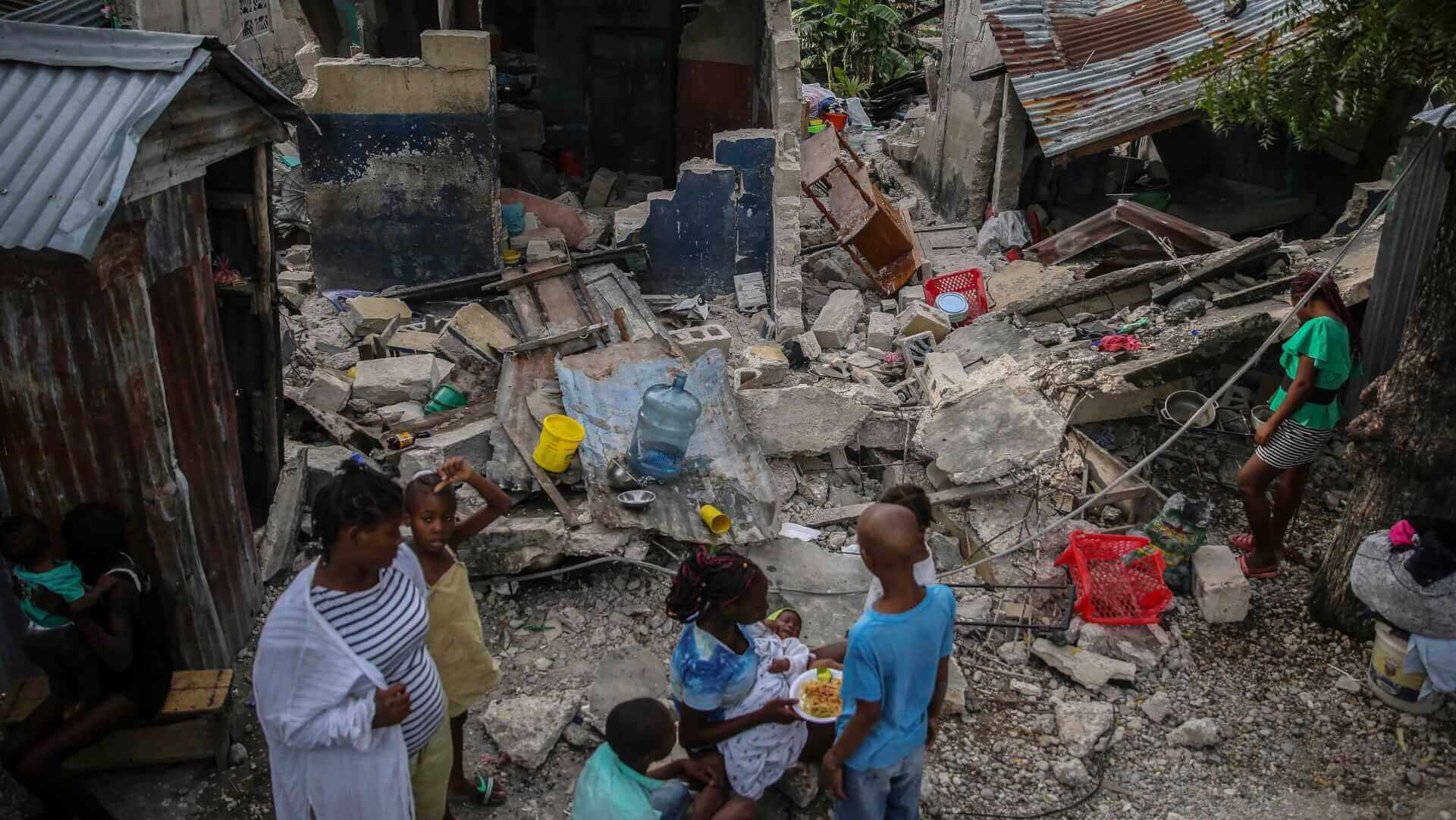The death toll from the 7.2 magnitude earthquake that struck Haiti on August 14 has reached 1,419, with the number continuing to rise. At least 6,000 people are injured and thousands have been displaced, with authorities estimating that 13,694 homes were destroyed and 13,785 homes were damaged, leaving 30,000 families homeless.
The initial earthquake, which struck the southwest of the country, was followed by five aftershocks and resulted in landslides in several areas. In fact, Cuba’s National Centre for Seismological Research (CENAIS) has recorded a total of 489 aftershocks in the aftermath of the first 7.2 magnitude earthquake.
The last big earthquake in Haiti occurred on January 12, 2010, when upwards of 300,000 people are reported to have died. The frequency of these events is attributed to the fact that Haiti lies on the intersection of the North American plate and the Caribbean plate, with multiple fault lines between those plates running through Haiti. Furthermore, aside from the fact that it is situated in a highly seismically active area, it also has a high population density and buildings that are not built to withstand such extreme weather events.
In response to the latest earthquake, Prime Minister Ariel Henry has declared a one-month state of emergency and has begun sending first aid convoys to the most affected towns to assist the currently overwhelmed hospitals.
In addition, the Pan American Health Organization (PAHO) has deployed a team of experts to “evaluate damage and coordinate an appropriate health response,” and is flanked by the Haitian Ministry of Health, United Nations agencies, and a number of other international partners. PAHO will also be sending emergency medical teams (EMTs), medical supplies, and other equipment. The World Food Programme will be sending food aid on Tuesday.
Likewise, the United States Agency for International Development (USAID) and the US Coast Guard are working together to deploy medical and search and rescue personnel to the country as part of a 65-member team. USAID Administrator Samantha Power said the team would bring “52,000 pounds of specialised tools, equipment, and medical supplies to assist in search operations.”
President Joe Biden released a statement confirming the USAID response and said that the US “remains a close and enduring friend to the people of Haiti, and we will be there in the aftermath of this tragedy.” Deputy Secretary of State Wendy Sherman also spoke with Haitian PM Henry to reassure him of US support.
Meanwhile, Mexico and the Dominican Republic have sent food and medicine while Colombia has deployed search and rescue personnel.
Unfortunately, Haiti is not out of the clear. Tropical Storm Grace is now closing in on the southern coast of Hispaniola, which could result in even further flooding and mudslides. The knock-on effects of these events can be catastrophic. The 2010 earthquake was closely followed by Haiti’s first cholera outbreak after a case was reported in a UN peacekeeping camp. This then led to 820,00 cases and around 10,000 deaths. Given that this earthquake occurred during the ongoing COVID-19 pandemic, there are fears that COVID-19 cases could now get out of hand.
The country is already in the midst of political turmoil. On July 7, then-President Jovenel Moïse was assassinated at his residence in Port-au-Prince. Moïse’s assassination came amid a prolonged period of political, economic, and social instability in Haiti, with political opposition arguing that the now-former president’s rule was illegitimate and citizens decrying rising levels of crime and poverty. Moïse was accused of corruption, political suppression, and authoritarianism.
Furthermore, roughly 60% of Haiti’s population makes less than $2 a day and the country’s economy contracted by 3.8% in 2020. In June, the United Nations Children’s Fund (UNICEF) reported that thousands of women and children in Haiti had been displaced over the last month due to rising gang violence, and that many of them now lack access to clean water and other basic necessities.
Against this backdrop, seeing as gangs control several areas within the country, the UN has called for a “humanitarian corridor” to be created so that aid can reach those who need it. Regardless of what happens, however, it seems certain that this latest crisis will exacerbate Haiti’s already growing economic and food shortage problems.
Death Toll From Haiti Earthquake Rises to 1,419, With 30,000 Families Now Homeless
Unfortunately, Haiti is not out of the clear. Tropical Storm Grace is now closing in on the southern coast of Hispaniola, which could result in even further flooding and mudslides.
August 17, 2021

IMAGE SOURCE: JOSEPH ODELYN / APWreckage from the 7.2 magnitude earthquake
